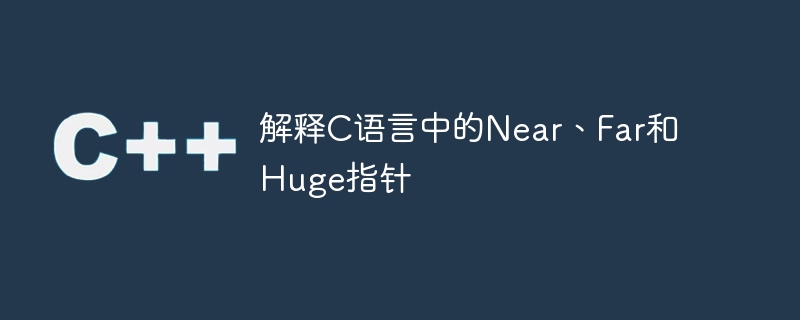Home >Backend Development >C++ >Explain Near, Far and Huge pointers in C language
Explain Near, Far and Huge pointers in C language
- WBOYWBOYWBOYWBOYWBOYWBOYWBOYWBOYWBOYWBOYWBOYWBOYWBforward
- 2023-09-14 15:13:021642browse

Based on the memory model and segment, pointers are divided into three types -
- Near pointer
- Far pointer
- Large pointer
Near pointer
is a pointer that works within the 64Kb memory data segment range.
It cannot access addresses beyond this data segment.
Near pointers can be incremented or decremented by using the address range arithmetic operators.
Using the keyword near, we can set any pointer to a near pointer.
Grammar
The syntax is as follows-
<data type> near <pointer definition> <data type> near <function definition>
The following statement declares the near pointer of variable s
char near *string;
Program
The following program shows the usage of near pointers.
#include<stdio.h>
int main(){
int number=50;
int near* p;
p=&number;
printf("%d",sizeof(p));
return 0;
}Output
The output is as follows-
2
Far pointer
It is a pointer, which stores different pointers offset and segment address.
The far pointer address range is 0 to 1MB.
When the pointer is incremented or decremented, only the offset part changes.
It has access to all 16 segments.
Grammar
The syntax is as follows-
<data type> far <pointer definition> <data type> far <function definition>
The following statement declares the far pointer of variable s
char far *s;
Program
The following program shows the usage of far pointers.
#include<stdio.h>
int main(){
int number=50;
int far *p;
p=&number;
printf("%d",sizeof number);
return 0;
}Output
The output is as follows -
4
Large pointer
-
It is a size similar to that of a far pointer Pointers, since both are 32-bit addresses.
Large pointers can be incremented without being affected by segment work loops.
Procedure
The following program shows the use of large pointers.
#include<stdio.h>
Int main(){
Char huge *far *ptr;
Printf("%d%d%d",sizeof(ptr),sizeof(*ptr),sizeof(**ptr));
Return 0;
}Output
The output is as follows -
4 4 1
The above is the detailed content of Explain Near, Far and Huge pointers in C language. For more information, please follow other related articles on the PHP Chinese website!
Related articles
See more- C++ compilation error: A header file is referenced multiple times, how to solve it?
- C++ compilation error: wrong function parameters, how to fix it?
- C++ error: The constructor must be declared in the public area, how to deal with it?
- Process management and thread synchronization in C++
- How to deal with data splitting problems in C++ development

